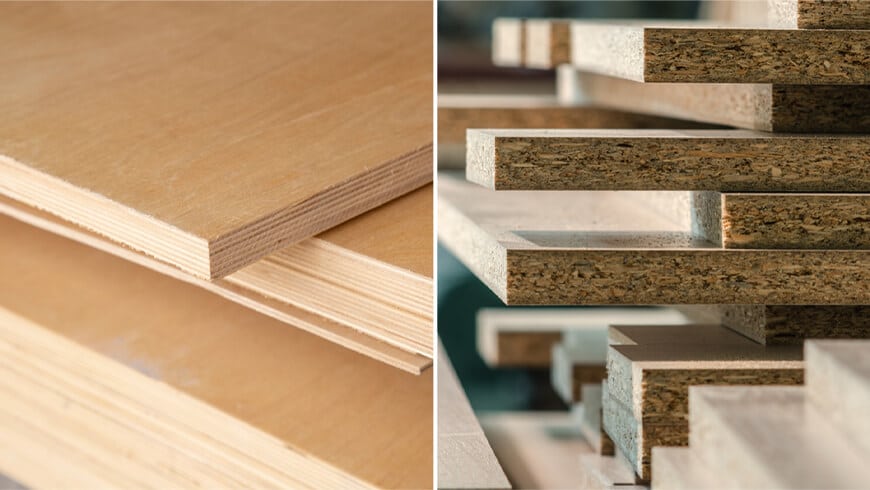What are the Different Types of Plywood?

What is Plywood and how is it Defined by the Industry?
If you are planning a renovation, it is important to have a firm grasp of what materials you are interested in using for the project. Before ordering products and materials, you should make sure you do some research to allow yourself to have peace of mind when you order so you know that you are not being taken advantage of. Unfortunately, there are some vendors out there that will try to take advantage of you with loopholes or inferior products. Here at Longo Labs we specialize in turning visions into realities for classroom and commercial laboratory renovations and we want to help empower our potential customers with the knowledge that they need to make informed decisions about their renovation projects. Today, we would like to discuss the different types of plywood and the industry terminology that you should know before buying wooden casework.
The Two Different Types of Plywood
There are two primary types of plywood and you should be aware of the industry terminology and definitions for each type. Plywood is defined by Oxford Languages as “a type of strong thin wooden board consisting of two or more layers glued and pressed together with the direction of the grain alternating, and usually sold in sheets of four by eight feet.” The inner “plies” determine the thickness of the wood based on how many there are. Commonly, when people think of plywood they are thinking of veneer core plywood, which is the sturdier and more long-lasting type. However, there is also another type called particleboard core plywood, which is flatter, smoother, and has a more even thickness throughout.
Veneer Core Plywood
Veneer core plywood is a very stiff type of wood material that effectively resists impact. This makes it a sturdy option for shelves and casework. It also has a strong screw holding power that makes it a good quality material for furniture where drawers, handles, and other components need to be held together with screws. Another beneficial quality of veneer core plywood is the fact that it has a high resistance to swelling. Oftentimes laboratories and classrooms science labs are exposed to moisture and water and over time, with a less resistant material such as particleboard, the casework would become damaged due to swelling.
Particleboard Core Plywood
On the other hand, particleboard core plywood is flatter and more even than veneer, and since it is made in a factory using resin to bind it together it makes it less prone to voids. Veneer, however, is cut directly from trees and so it is less polished and smooth, making voids possible that could eventually lead to small holes. Since particleboard is a more factory-produced material, it is smoother and doesn’t run the risk of ever looking wrinkled as veneer core plywood might. It is often used for doors and drawer fronts for this reason, since it has such an even, smooth look to it. Due to the single inner ply in particleboard, it is more resistant to warping.
When to Consider Each Type of Plywood
Ultimately, these two materials are different and are therefore of a different quality. Veneer core plywood is a much stronger, higher quality material, while particleboard core plywood is a much thinner, lower quality material. Veneer is the better option for shelves, casework, cabinet tops, and cabinet bottoms. Any surface that will bear weight is better off with veneer core plywood. Dry spaces and doors and drawer fronts might benefit from particleboard core plywood, even though it is overall the inferior material.
Choose Longo Labs for Your Casework Needs
For your next laboratory renovation project, choose Longo Labs. From choosing quality casework products to planning to implementation, our team will be transparent with you and help you to make the best decisions for your project. Get in touch with us or schedule a consultation with our team of lab renovation experts. Our goal is to help businesses like yours turn your vision into a reality by planning, designing, and installing your lab renovation project.
